Items
Format is exactly
Comic strip
-
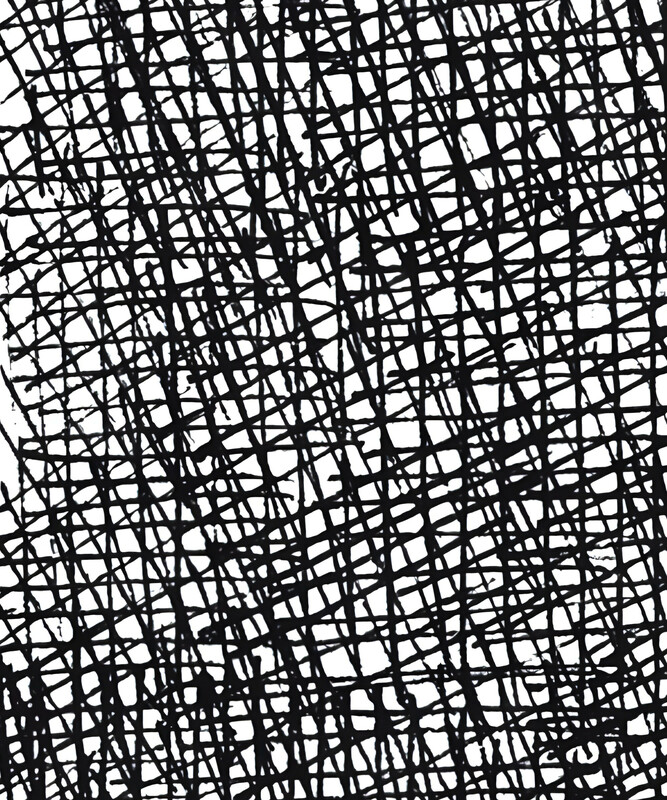 Un chasco negro A half-page comic-strip with four panels, each with a caption in verse form. These depict a well-dressed Black man looking into a mirror and preparing for a photographic portrait, which is then taken by a white photographer, using a tripod-mounted bellows camera. Next the man is shown the negative of the image and the text describes how he much admires his apparently white skin. Finally, bitter disappointment follows when he sees the final print in which he is “as black as the day he was born”.
Un chasco negro A half-page comic-strip with four panels, each with a caption in verse form. These depict a well-dressed Black man looking into a mirror and preparing for a photographic portrait, which is then taken by a white photographer, using a tripod-mounted bellows camera. Next the man is shown the negative of the image and the text describes how he much admires his apparently white skin. Finally, bitter disappointment follows when he sees the final print in which he is “as black as the day he was born”. -
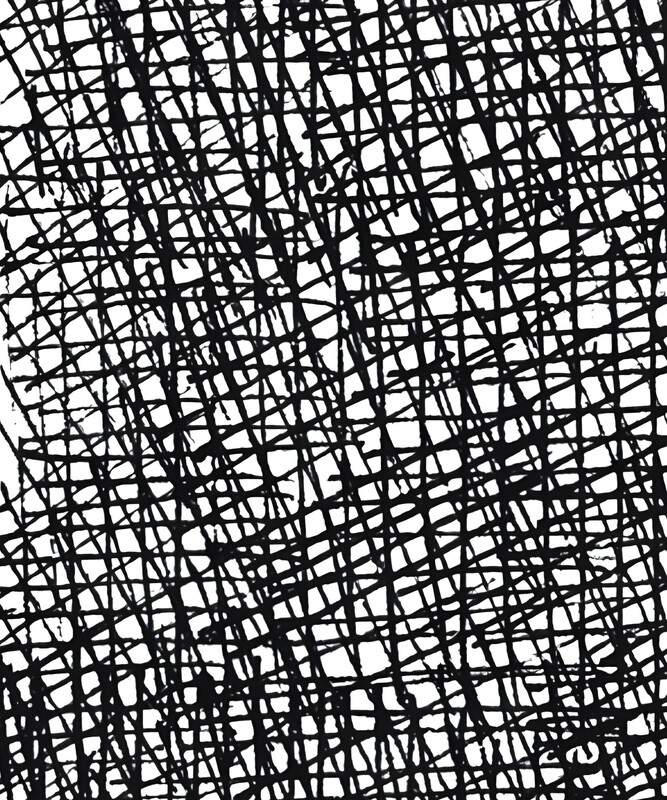 El último pago The composition is divided into two clearly differentiated scenes. On the left are three figures, two of whom are dressed in formal attire, while the third is a police officer. Holding a sign with the inscription "200 contributions", these individuals represent the tax collectors. In contrast, on the right-hand side, we observe a man standing next to a seated woman, whose posture suggests a state of extreme fatigue, almost slipping to the ground. The woman's clothing includes espadrilles, a ruana and a hat, elements that denote her Indigenous origin. In the centre of this scene, a human skeleton gives its skin to the men on the right.
El último pago The composition is divided into two clearly differentiated scenes. On the left are three figures, two of whom are dressed in formal attire, while the third is a police officer. Holding a sign with the inscription "200 contributions", these individuals represent the tax collectors. In contrast, on the right-hand side, we observe a man standing next to a seated woman, whose posture suggests a state of extreme fatigue, almost slipping to the ground. The woman's clothing includes espadrilles, a ruana and a hat, elements that denote her Indigenous origin. In the centre of this scene, a human skeleton gives its skin to the men on the right. -
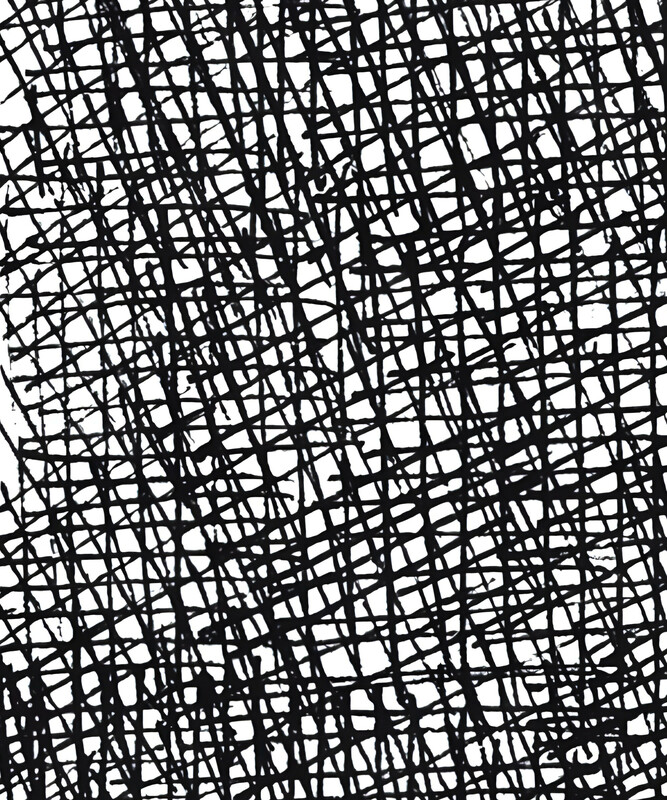 A propósito teléfono "A propósito del teléfono" is a comic strip published in the magazine El Perú Ilustrado and consists of six vignettes showing everyday situations related to the arrival of the telephone in Lima. In one of them, a Black man shows his surprise at being notified that he can get a job as an officer.
A propósito teléfono "A propósito del teléfono" is a comic strip published in the magazine El Perú Ilustrado and consists of six vignettes showing everyday situations related to the arrival of the telephone in Lima. In one of them, a Black man shows his surprise at being notified that he can get a job as an officer. -
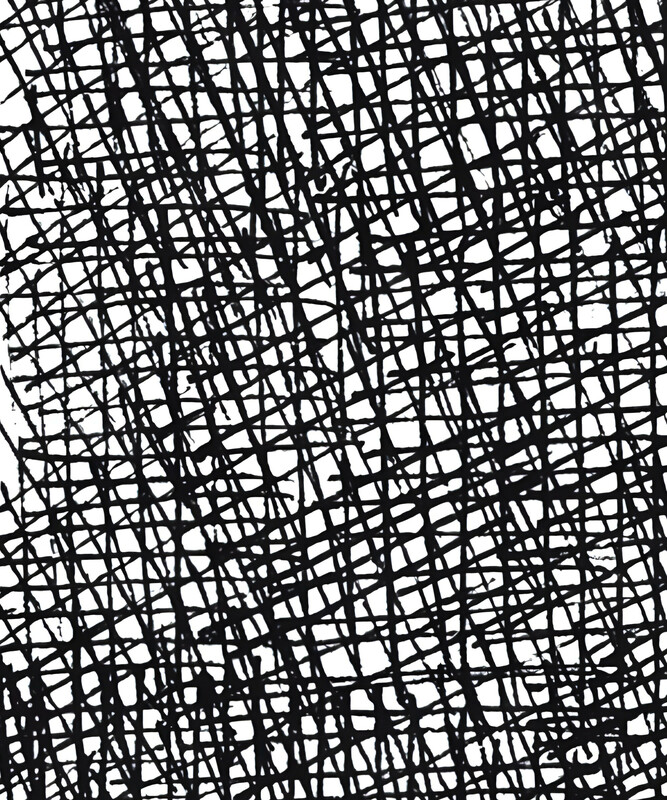 El teléfono fantasma A half-page comic-strip, with six drawings and no text, which shows a small boy playing with a wall-mounted telephone typical of the very early twentieth century. He uses a hat and suit of clothes to make the telephone look like a human figure facing the wall. The boy leaves the room. Then a Black male cleaner, carrying mop and bucket, enters the room, unaware of the figure. The telephone rings and he turns to look. Astonished at what he sees, he falls over in amazement, cartoon-style.
El teléfono fantasma A half-page comic-strip, with six drawings and no text, which shows a small boy playing with a wall-mounted telephone typical of the very early twentieth century. He uses a hat and suit of clothes to make the telephone look like a human figure facing the wall. The boy leaves the room. Then a Black male cleaner, carrying mop and bucket, enters the room, unaware of the figure. The telephone rings and he turns to look. Astonished at what he sees, he falls over in amazement, cartoon-style. -
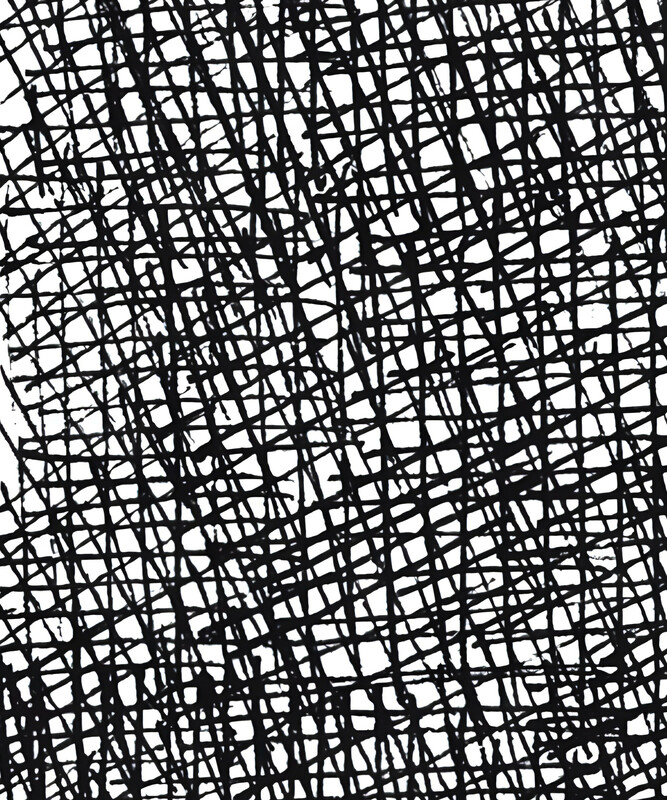 Runtanos de tuerca y tornillo A half-page comic strip with four panels, each with a caption in verse form. The panels start with two old men, identified by the text as illiterate, dressed in ponchos and carrying walking sticks, who are being introduced by a policeman to a photographer who will take their photos for their citizen identity cards. The photographer irritates the men by asking them to put aside their walking sticks and straw hats, a request the men do not understand. Their irritation turns violent when the photographer puts his head under the dark cloth to take the photo. They think he is aiming a weapon at them and set upon him with their sticks.
Runtanos de tuerca y tornillo A half-page comic strip with four panels, each with a caption in verse form. The panels start with two old men, identified by the text as illiterate, dressed in ponchos and carrying walking sticks, who are being introduced by a policeman to a photographer who will take their photos for their citizen identity cards. The photographer irritates the men by asking them to put aside their walking sticks and straw hats, a request the men do not understand. Their irritation turns violent when the photographer puts his head under the dark cloth to take the photo. They think he is aiming a weapon at them and set upon him with their sticks. -
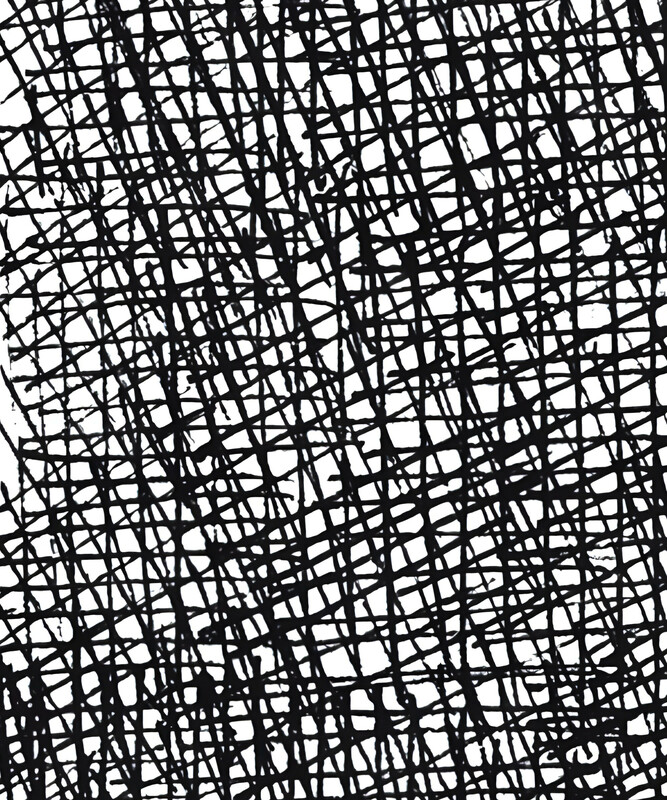 Boquellanta A group of Brazilian professional male, light-skinned, wavy-haired football players are practicing skilfully moving the football. They players are drawn looking human in a ‘naturalistic’ way. Next to the players, there is a figure, representing the character Boquellanta. This figure is not drawn in the same ‘naturalistic’ human-looking way as the players, but rather drawn as a grotesque figure that looks not human but like a cartoon, drawn fully in black ink representing black skin, with a big, squared head, huge ears, curly hair, a thick white circle in place of the mouth, and with enormous white eyes. He is dressed in square-printed pants, suspenders, a stripey t-shirt and grotesque enormous shoes, potentially resembling the shoes of a clown. The players take a break and Boquellanta, admiring the player’s great skills with the football, decides to take a chance with the football and starts moving it with his feet. The players, impressed when seeing Boquellanta playing the football, comment out loud that the little Brazilian, as they call him, has an impressive dominion of the football. Boquellanta replies to the players that he is not a little Brazilian and that he is a “true Black” who lives in the Malambito*, a racialised neighbourhood in the Colombian Atlantic region, traditionally associated with Afrocolombian populations. * “Yo soy negro de pura cepa y vivo en Malambito”.
Boquellanta A group of Brazilian professional male, light-skinned, wavy-haired football players are practicing skilfully moving the football. They players are drawn looking human in a ‘naturalistic’ way. Next to the players, there is a figure, representing the character Boquellanta. This figure is not drawn in the same ‘naturalistic’ human-looking way as the players, but rather drawn as a grotesque figure that looks not human but like a cartoon, drawn fully in black ink representing black skin, with a big, squared head, huge ears, curly hair, a thick white circle in place of the mouth, and with enormous white eyes. He is dressed in square-printed pants, suspenders, a stripey t-shirt and grotesque enormous shoes, potentially resembling the shoes of a clown. The players take a break and Boquellanta, admiring the player’s great skills with the football, decides to take a chance with the football and starts moving it with his feet. The players, impressed when seeing Boquellanta playing the football, comment out loud that the little Brazilian, as they call him, has an impressive dominion of the football. Boquellanta replies to the players that he is not a little Brazilian and that he is a “true Black” who lives in the Malambito*, a racialised neighbourhood in the Colombian Atlantic region, traditionally associated with Afrocolombian populations. * “Yo soy negro de pura cepa y vivo en Malambito”. -
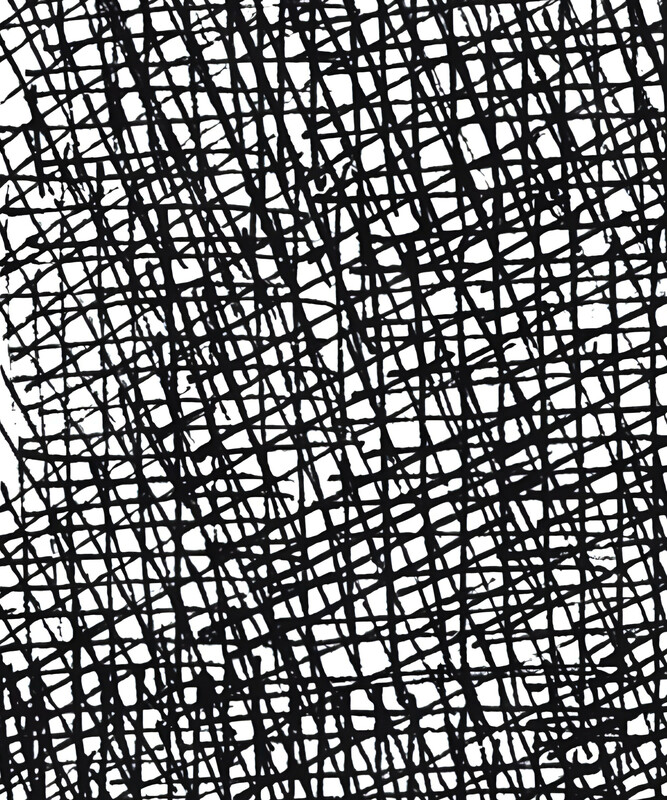 Escuela Panamericana de Arte: Razas Humanas Two black-and-white pages composed of drawn profiles of the heads of different Black and Indigenous men alongside white heads. Lines are included to delineate established notions of skull shape for different racial groups. The text describes what it sees as typical cranial characteristics of ‘black’, ‘coloured’, and ‘yellow’ groups in comparison to ‘whites’.
Escuela Panamericana de Arte: Razas Humanas Two black-and-white pages composed of drawn profiles of the heads of different Black and Indigenous men alongside white heads. Lines are included to delineate established notions of skull shape for different racial groups. The text describes what it sees as typical cranial characteristics of ‘black’, ‘coloured’, and ‘yellow’ groups in comparison to ‘whites’. -
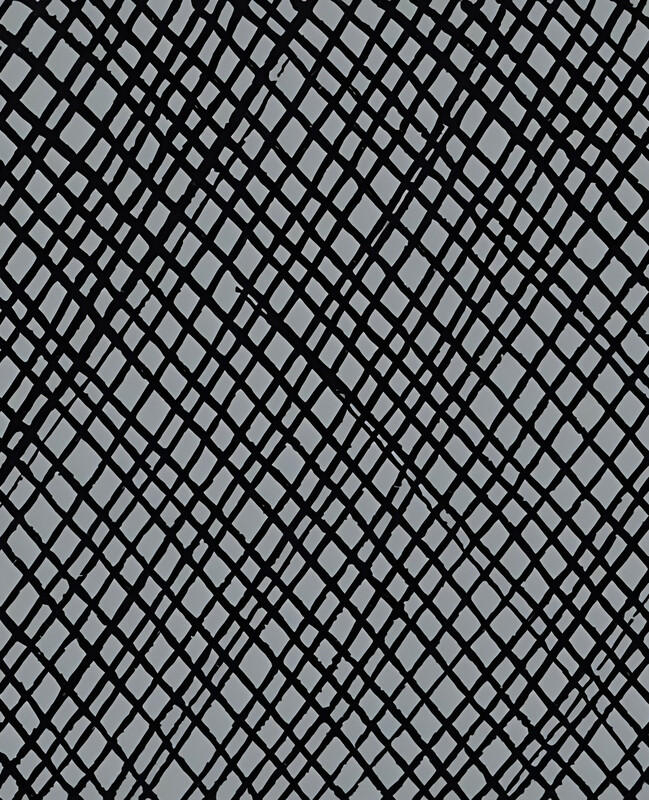 Las razas mayores This image, the title of which translates as “The main races”, occupies half a page of the magazine and has two rows, each with four line-drawings. Each drawing has a label and some of these are the names of what were taken, in the early twentieth century, to be the main human “races” - Caucasian, Mongoloid, Indian, Ethiopian. There are some other labels which are semi-serious or humorous - Red (i.e. “Red Indian”, meaning Indigenous American), Modern, Diabolical and Horse.
Las razas mayores This image, the title of which translates as “The main races”, occupies half a page of the magazine and has two rows, each with four line-drawings. Each drawing has a label and some of these are the names of what were taken, in the early twentieth century, to be the main human “races” - Caucasian, Mongoloid, Indian, Ethiopian. There are some other labels which are semi-serious or humorous - Red (i.e. “Red Indian”, meaning Indigenous American), Modern, Diabolical and Horse. -
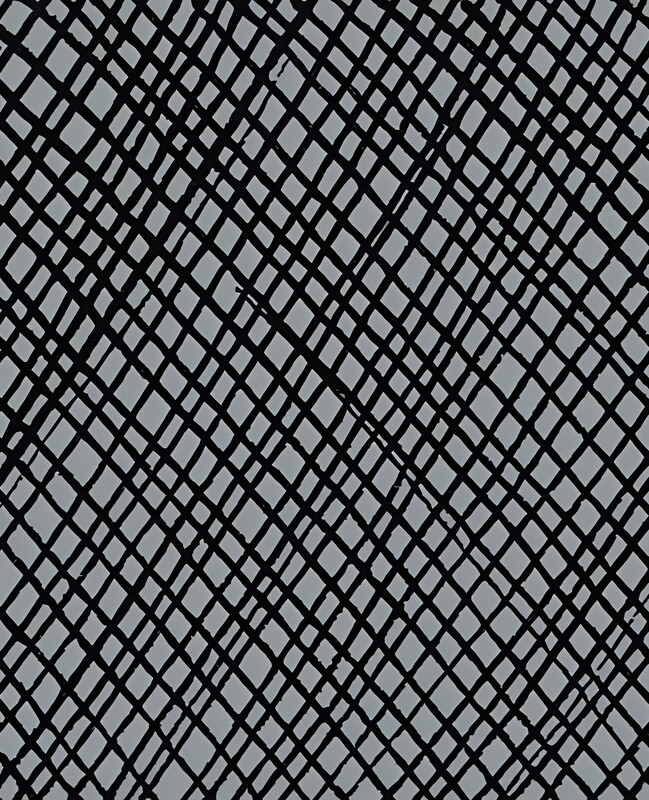 Episodio carnavalesco The one-page comic-strip with six black-and-white panels narrates how three well-off young men, while out on a drinking spree, buy carnival-style masks. One has a mask showing a caricatured African face. Arriving home very drunk, he goes to bed with the mask still on. In the morning, his mother comes into the bedroom with coffee, sees him asleep, mistakes him for a Black man, and screams in alarm that there are thieves in the house.
Episodio carnavalesco The one-page comic-strip with six black-and-white panels narrates how three well-off young men, while out on a drinking spree, buy carnival-style masks. One has a mask showing a caricatured African face. Arriving home very drunk, he goes to bed with the mask still on. In the morning, his mother comes into the bedroom with coffee, sees him asleep, mistakes him for a Black man, and screams in alarm that there are thieves in the house. -
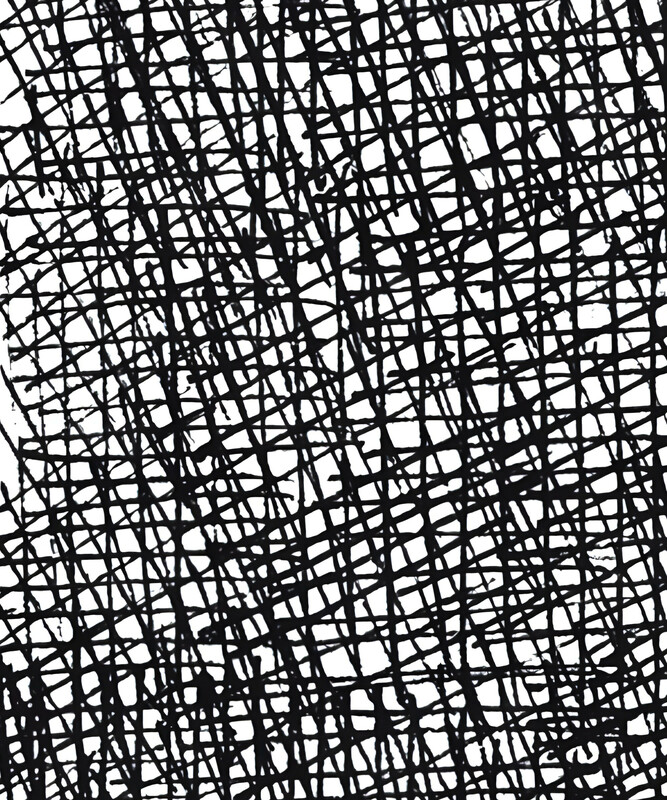 ¡Qué Buen estómago! This one-page comic strip with six black-and-white panels shows a Black man being questioned by a white man, with a young white child also in the scene. The Black man confirms he is from the Goajira (an area in the Caribbean region of Colombia), where he agrees with the white man that life is completely “primitive”. The white man asks if he likes children and he responds that he does but that “afterwards” they upset his stomach if he doesn’t take bicarbonate of soda.
¡Qué Buen estómago! This one-page comic strip with six black-and-white panels shows a Black man being questioned by a white man, with a young white child also in the scene. The Black man confirms he is from the Goajira (an area in the Caribbean region of Colombia), where he agrees with the white man that life is completely “primitive”. The white man asks if he likes children and he responds that he does but that “afterwards” they upset his stomach if he doesn’t take bicarbonate of soda. -
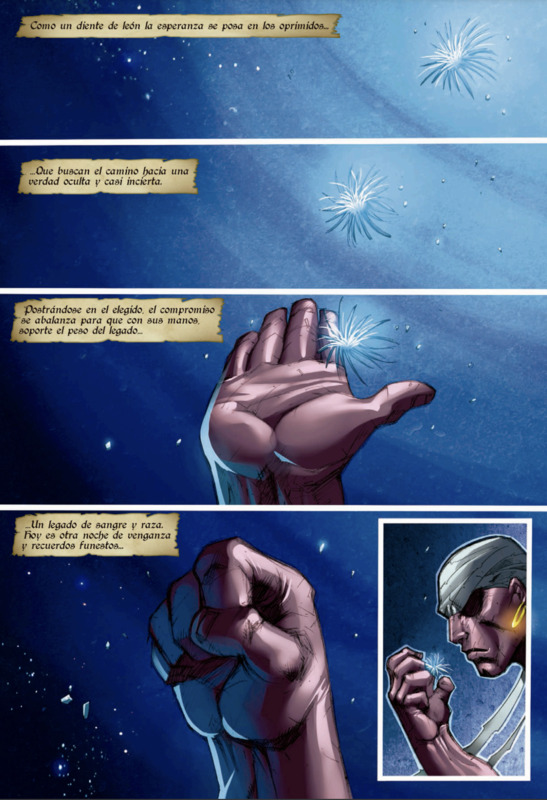 Zambo Dendé Image 1: The page is divided in four horizontal panels. Each panel shows a dandelion against a blue background, slowly floating down into a light-brown-skinned hand. Each panel has a text that reads, consecutively: “Like a dandelion, hope rests on the oppressed...”; “...Who seek the path to a hidden and uncertain truth”; “Prostrating itself before the chosen one, the committed one rushes forward so that with his hands he can bear the weight of the legacy...”; “...A legacy of blood and race. Today is another night of revenge and disastrous memories...”. As the dandelion falls gently into the palm of the hand, the hand closes up, clasping the dandelion, adopting the shape of a fist. In the bottom panel, a frame is inserted showing the profile of a muscular, light-brown-skinned young man, with angular facial features, his eyes covered by shadows, his head wrapped in a turban. This is Zambo Dendé. The corners of his mouth are turned downwards, looking very serious, maybe angry. The man is staring at the dandelion clasped between his fingers. Image 2: A black-and-white high-contrast drawing with, on the left, menacing gods and goddesses, a cloak-wearing death-figure and men with swords (probably conquistadors), in an attacking attitude. They are confronting a group of men and women on the right side of the page, one of whom holds a baby in her arms. Some of the men are wearing feather headdresses—possibly resembling Indigenous people. They all look worried and scared. Behind this group of people there are pre-Columbian objects - a temple-like building and a monumental stone sculpture of a pre-Columbian deity. At the front of the group, in the foreground of the page, stands Zambo Dendé, wearing hoop earrings and a pectoral. He is very strong, with big, defined muscles. He has a chain wrapped around his left arm and is confronting the sword-bearing men. Running down the middle of the page, nine speech frames deploy the following texts: “The ancient legends of Latin America recount that, at the beginning of time, Bah-Chuệ, the supreme deity, conceived the cosmic gods, Karak-Quasim, Malak-Boaki, Waji-Ela and Sulai-Maka, to rule over all life in the universe from the sacred temple of Etherea. / Malak-Boaki gave shape to humanity and endowed it with the freedom that the gods enjoyed. This sparked the wrath of Karak-Quasim, the youngest and most despotic of the brothers, who felt that it would jeopardize the supremacy of the gods; he responded to the threat by creating the demigods, so that they could control and subjugate humanity. / The dark forces gave shape to the Unholy One, a man who would execute the vehement plan of the god Karak and in whose hands lay the full power of an onslaught that sought the destruction of all existing nature. / Legends also say that Malak-Boaki, aware of the situation, chose the man with the purest heart, full of courage and kindness, to become the protector of humanity. / From his emerald blood, Malak extracted his own amanola, the purest divine energy, and with it bestowed upon the chosen one the omnipotent gifts of the creator. / A rumour spread among the tribes of a pure man who would protect them from the evil of the invaders, the mercilessness of the demigods, and the wrath of the supreme creators./ Everyone baptized him as The Immaculate One and many say that he came to face the infinite power of the cosmic gods./ However, the conflict unleashed the anger of Bah-Chué and triggered his attack against the planet. / Now, the time of the last prophecy has begun and the destiny of humanity is in the hands of a mysterious heir.”
Zambo Dendé Image 1: The page is divided in four horizontal panels. Each panel shows a dandelion against a blue background, slowly floating down into a light-brown-skinned hand. Each panel has a text that reads, consecutively: “Like a dandelion, hope rests on the oppressed...”; “...Who seek the path to a hidden and uncertain truth”; “Prostrating itself before the chosen one, the committed one rushes forward so that with his hands he can bear the weight of the legacy...”; “...A legacy of blood and race. Today is another night of revenge and disastrous memories...”. As the dandelion falls gently into the palm of the hand, the hand closes up, clasping the dandelion, adopting the shape of a fist. In the bottom panel, a frame is inserted showing the profile of a muscular, light-brown-skinned young man, with angular facial features, his eyes covered by shadows, his head wrapped in a turban. This is Zambo Dendé. The corners of his mouth are turned downwards, looking very serious, maybe angry. The man is staring at the dandelion clasped between his fingers. Image 2: A black-and-white high-contrast drawing with, on the left, menacing gods and goddesses, a cloak-wearing death-figure and men with swords (probably conquistadors), in an attacking attitude. They are confronting a group of men and women on the right side of the page, one of whom holds a baby in her arms. Some of the men are wearing feather headdresses—possibly resembling Indigenous people. They all look worried and scared. Behind this group of people there are pre-Columbian objects - a temple-like building and a monumental stone sculpture of a pre-Columbian deity. At the front of the group, in the foreground of the page, stands Zambo Dendé, wearing hoop earrings and a pectoral. He is very strong, with big, defined muscles. He has a chain wrapped around his left arm and is confronting the sword-bearing men. Running down the middle of the page, nine speech frames deploy the following texts: “The ancient legends of Latin America recount that, at the beginning of time, Bah-Chuệ, the supreme deity, conceived the cosmic gods, Karak-Quasim, Malak-Boaki, Waji-Ela and Sulai-Maka, to rule over all life in the universe from the sacred temple of Etherea. / Malak-Boaki gave shape to humanity and endowed it with the freedom that the gods enjoyed. This sparked the wrath of Karak-Quasim, the youngest and most despotic of the brothers, who felt that it would jeopardize the supremacy of the gods; he responded to the threat by creating the demigods, so that they could control and subjugate humanity. / The dark forces gave shape to the Unholy One, a man who would execute the vehement plan of the god Karak and in whose hands lay the full power of an onslaught that sought the destruction of all existing nature. / Legends also say that Malak-Boaki, aware of the situation, chose the man with the purest heart, full of courage and kindness, to become the protector of humanity. / From his emerald blood, Malak extracted his own amanola, the purest divine energy, and with it bestowed upon the chosen one the omnipotent gifts of the creator. / A rumour spread among the tribes of a pure man who would protect them from the evil of the invaders, the mercilessness of the demigods, and the wrath of the supreme creators./ Everyone baptized him as The Immaculate One and many say that he came to face the infinite power of the cosmic gods./ However, the conflict unleashed the anger of Bah-Chué and triggered his attack against the planet. / Now, the time of the last prophecy has begun and the destiny of humanity is in the hands of a mysterious heir.”
